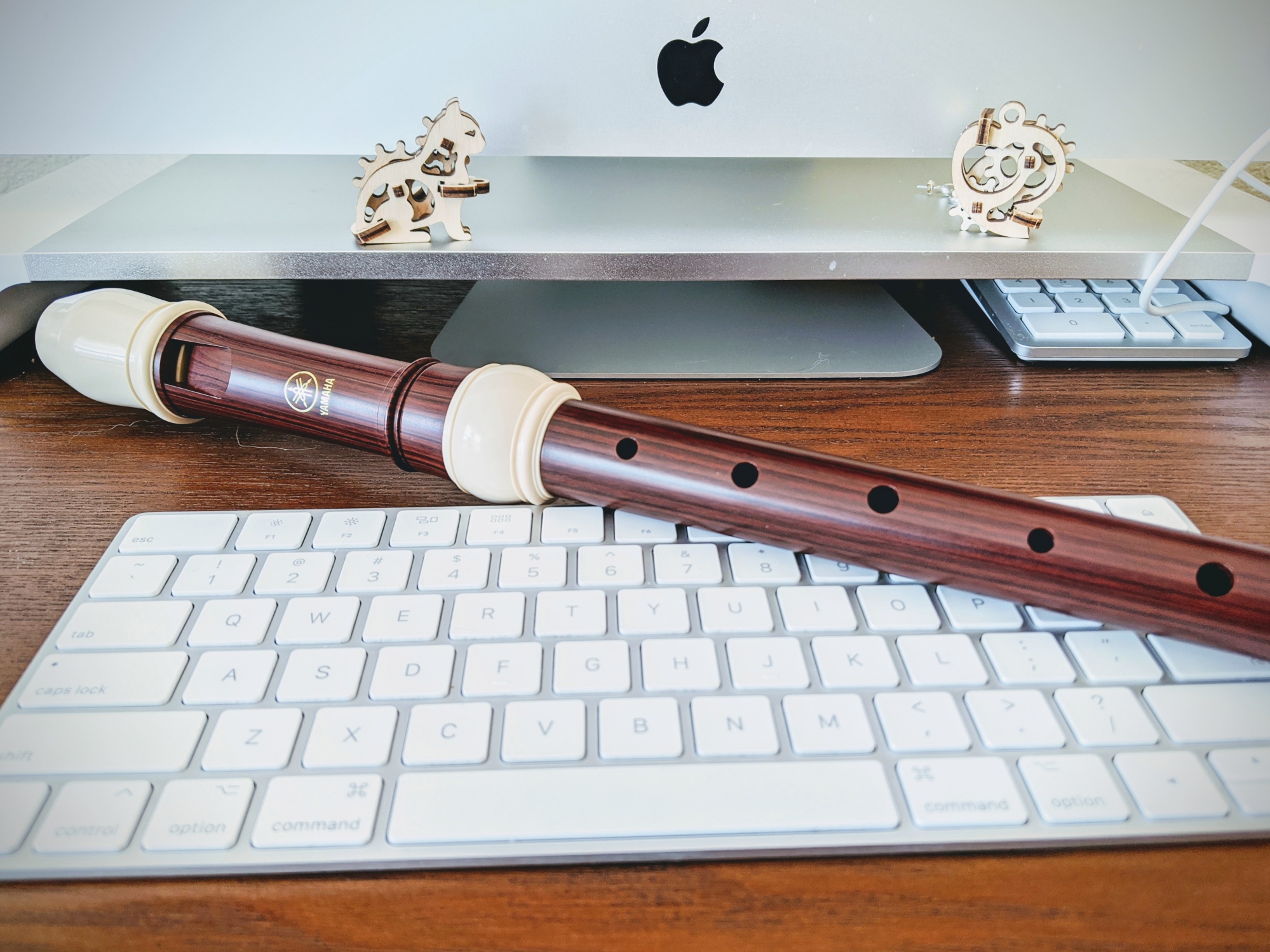 Don't let a fear of technology keep you from taking online recorder lessons! Do you own a tablet or computer? Then you can be on your way to online lessons. If you are looking for an online teacher, visit the American Recorder Society's directory of online recorder teachers.
Don't let a fear of technology keep you from taking online recorder lessons! Do you own a tablet or computer? Then you can be on your way to online lessons. If you are looking for an online teacher, visit the American Recorder Society's directory of online recorder teachers.
We asked recorder professionals Rachel Begley, Anne Timberlake, Adam Gilbert, and Jennifer Carpenter to offer tips on what you need to know before taking your first online recorder lesson:
The speed of your internet connection is the most critical factor. If you are using WiFi, get as close as you can to the router. The greater the distance from it, the greater the number of issues you may have.
Technical requirements for online lessons: camera, microphone, and speaker. Most devices come with all 3 already.
Some people prefer a separate camera and/or microphone, but they aren't essential.
Some prefer external speakers as the quality of in-device speakers is uneven.
Some use headphones, though it can be hard to hear how you sound when you play while using them.
When choosing a device, the bigger the screen, the better. Smart phones work, but your teacher is more limited in what they can see. Tablets, laptops, and desktop screens allow more visual space and generally have better speaker capabilities.
Be sure your device is plugged in and/or fully charged before the lesson starts.
During the lesson, switch off all other programs or apps not specifically in use, as well as notifications.
Be aware of time zone differences between you and your teacher and confirm/adjust accordingly.
Exchange phone numbers so that if things aren't working as you expect, you can troubleshoot together.
Confirm who is contacting whom to initiate the lesson: in general to help control timing, allow the teacher to contact you.
Prepare your space no less than 15 minutes before your lesson.
Have a chair that allows you to change positions and lets the teacher see all of you. Be prepared to reposition yourself as requested.
If you are using a laptop, put the stand to your left, relative to the camera, unless the microphone is on that side of the computer, in which case, reverse.
Be sure the room/space is adequately lit. It can be difficult for your teacher to see the movement of your fingers on the recorder if you are in a dark room only using a small lamp.
Have everyone else in the household respect that you are in a lesson and need it quiet. Dogs, kids, spouses -- all seem to be amplified across the speakers and it's quite distracting for both you and your teacher.
Have a pencil and notebook, tuner and metronome, any music and instruments you plan to play, some water to drink, your glasses, and anything else you might find useful.
The lesson subject matter will be no different from what you cover in an in-person lesson.
Your teacher will appreciate knowing what you want from your lesson ahead of time.
Scan any music and send it to your teacher so you both are on the same page (quite literally!).
Payment: Many teachers prefer to be paid before the lesson (options include PayPal, Venmo, Zelle and others), so be sure that is taken care of based on your teacher's preference.



 Don't let a fear of technology keep you from taking online recorder lessons! Do you own a tablet or computer? Then you can be on your way to online lessons. If you are looking for an online teacher, visit the
Don't let a fear of technology keep you from taking online recorder lessons! Do you own a tablet or computer? Then you can be on your way to online lessons. If you are looking for an online teacher, visit the 
